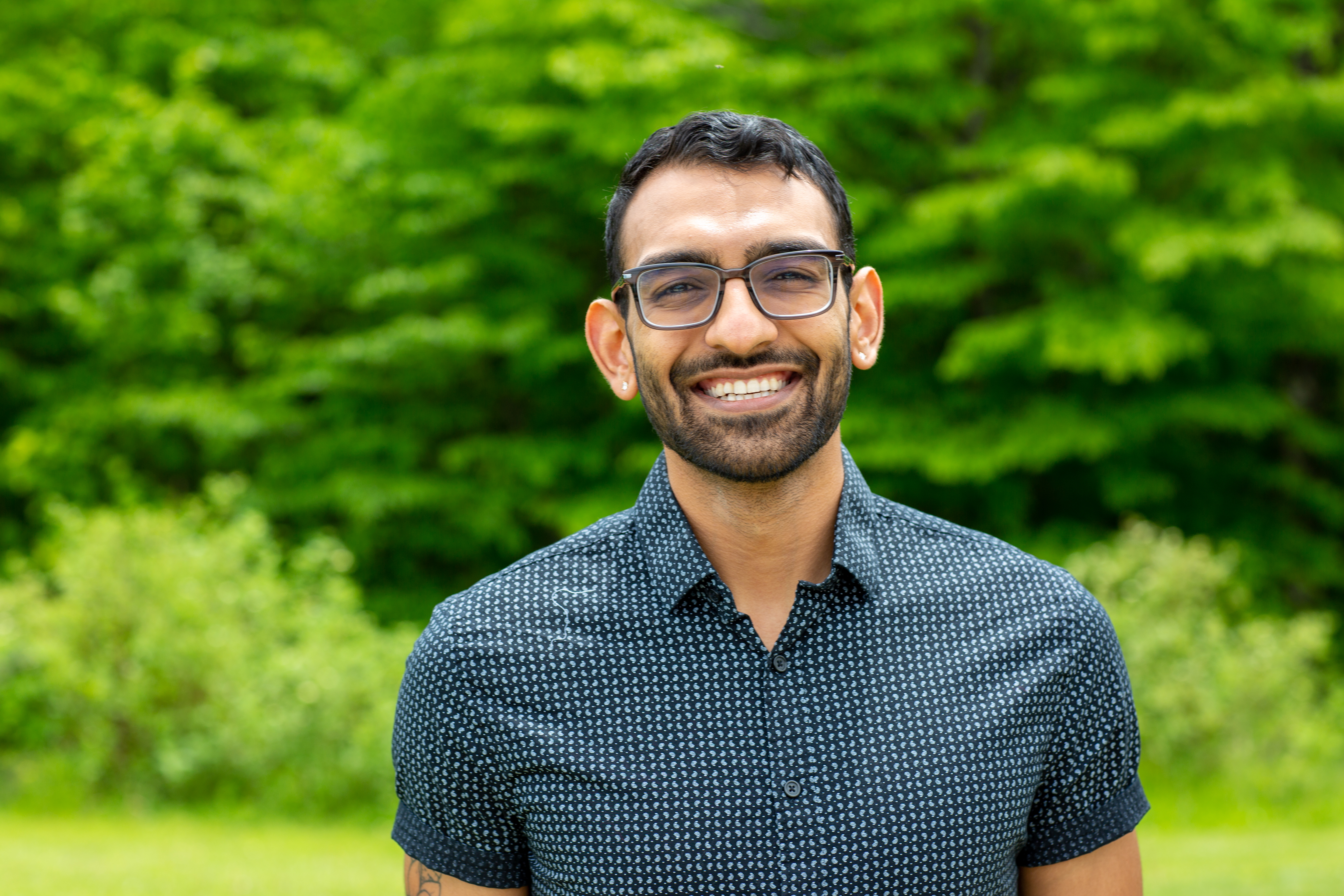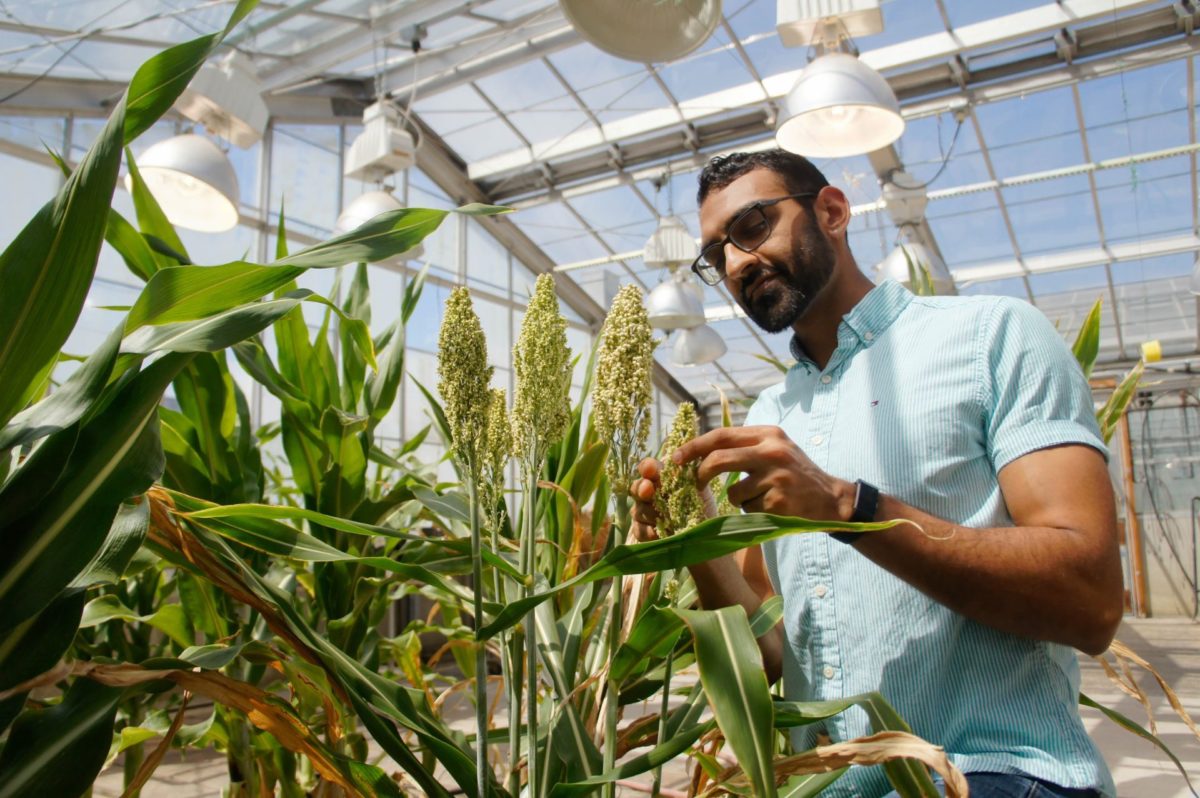Dhruv Patel is daring plants to take a risk

Dhruv Patel is using gene editing tools to research photosynthesis, a process he first noticed in the parking lot of the Los Angeles motel his family managed.
Patel observed plant biology in action as his grandmother and mom grew bountiful harvests, particularly vegetables from their faraway village in India. He was astounded by what he describes as an “absurd” amount of food grown in the spaces between chain-link fences and parked cars. Now, as a Rockey FFAR Fellow and a Ph.D. Candidate in the Niyogi lab at the University of California, Berkeley, Patel studies how plants cope with excess light to optimize photosynthesis.
Photosynthesis, the process by which plants, algae and microorganisms convert solar energy to chemical energy, is the foundation of our food supply and life as we know it. Contrary to what most houseplant enthusiasts may believe, more light is not always better. In fact, most crop plants suffer from excess sunlight, which has the capacity to damage cells and their constituent proteins. Understanding how plants and algae dissipate surplus sunlight could have major implications for crop performance.
“Photosynthesis is one of the final frontiers in breeding better plants,” Patel said.
“We know plants are playing it safe,” Patel said. “They’re very quick to turn it [protection against excess light] on, but slow to turn it off. They are throwing away energy that could be used to grow.”
Modern breeding techniques have generated improvements in many other plant traits, but photosynthesis has curiously lagged. Patel seeks to use CRISPR/Cas and other molecular techniques to develop crops that can more efficiently dissipate excess light to improve crop productivity. His research contributes to improved understanding of the process of photosynthesis and may deliver photosynthetically improved rice and other staples.
Patel sees great potential in using modern molecular techniques, including gene-editing, to drive yields via photosynthesis in the face of climate change. “We can still optimize crops to produce more food per unit land, while monitoring inputs to farm sustainably” he said. By improving the efficiency of photosynthesis, Patel’s research could increase yields and help agriculture adapt to climate change.

Witnessing his parents’ ability to adapt to a new life in the United States while finding ways to maintain a connection to their roots made a lasting impression on Patel as he traverses his own journey as a pioneer of biotechnology. He hopes to bring an aspect of that multicultural bridgebuilding to his own scientific pursuits.
And while the potential applications of his work are tremendous, Patel remarks on the excitement of the scientific pursuit as the primary motivation for his work.
“Learning something that for some period of time, you’re the only person in the world who knows, no matter how small, is exciting. I like knowing that I’ve found something and can share it with the world,” he said.
As he navigates the lab and beyond, Patel refuses to forget the voices and needs of people like his mother, with her parking lot garden, or his Gujarati farmer grandparents. “When I think about agriculture, the possibilities we have are vast and are only going to get bigger and bigger,” Patel said. He cautions, however, that despite its seemingly endless possibilities, finding true meaning in technology will only come from equitable access.
“Whenever knowledge is saved for [a] few, it never works for the benefit of all,” he noted.
Patel is excited to belong to a community dedicated to pushing the frontier of human knowledge and innovation forward. “Part of the reason I am proud of the science I do is that I try to see it from all sides,” he said. And that motivates the technologist and science communicator to chase his scientific discoveries with an understanding of who could and should benefit from it most.
RELATED RIPE OBJECTIVES
Relaxing Photoprotection